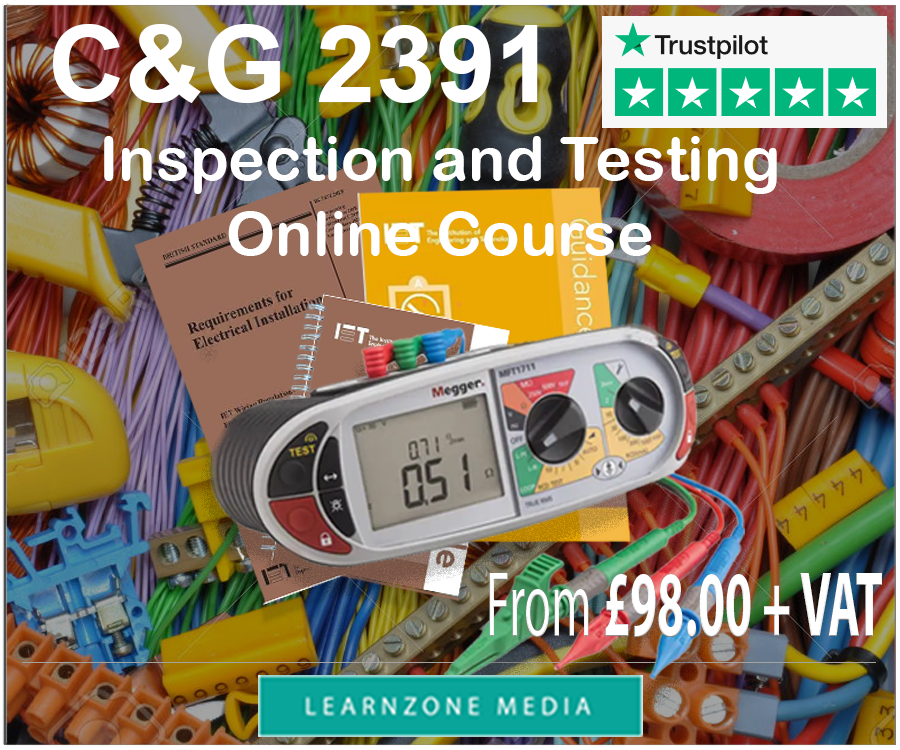Initial Verification
The purpose of this inspection is to verify that the installed equipment complies with BS 7671 and that it is not visibly damaged or defective so as to impair safety.
When a new installation has been completed or parts of an old installation altered or extended, it must be tested to ensure that it is safe to use. This process is the initial verification.
Assessment of general characteristics
BS 7671 requires that the following information shall be made available to the person carrying out the inspection and testing:
-
The maximum demand
-
The number and type of live conductors
-
The type of earthing arrangement
-
The nominal voltage
-
The nature of the load current and supply frequency
-
The prospective fault current at the origin of the installation (PFC)
-
The external earth fault loop impedance (Ze)
-
The type and rating of the overcurrent protective device acting at the origin of the installation.
These can be obtained by either inspection, enquiry or by measurement (PFC and Ze).
Diagrams, charts or tables should be available, so as to indicate the type and composition of circuits, identification of protective devices for shock protection, isolation and switching and a description of the method used for fault protection.
Inspection
During the inspection and testing procedure, the following items should be inspected to ensure that they comply with BS 7671. Some of these can be inspected during the erection process.
- Warning and danger notices fitted?
- Circuits identified?
- Diagrams and instructions available?
- The correct erection methods have been used?
- Is the equipment suitable for the environment?
- Correct type and size of protective devices been used?
- Have a 30mA RCD been fitted to all circuits which require one?
- Cables routed in safe zones?
- Correct erection methods been used?
- Are the correct size cables being used, taking into account voltage drop and current carrying capacity?
- Requirements been met for basic and fault protection?
- Protective devices and single pole switches connected in the phase conductor?
This list is not exhaustive and depending on the type of the installation, other items may need to be inspected.
Sequence of tests
During the initial verification procedure, each circuit must be tested. It is very important that the sequence of tests is carried out in a correct order.
The sequence of tests:
- Continuity of protective conductors, including main and supplementary bonding
- Continuity of ring final circuit conductors
- Insulation resistance
- Polarity test
- Earth fault loop impedance tests
- Prospective fault current test
- RCD test
- Phase sequence test
- Functional testing
Upon completion of the inspection and testing procedure of a new installation or changes to an existing installation, an Electrical Installation Certificate or a Minor Electrical Installation Works Certificate must be completed.





